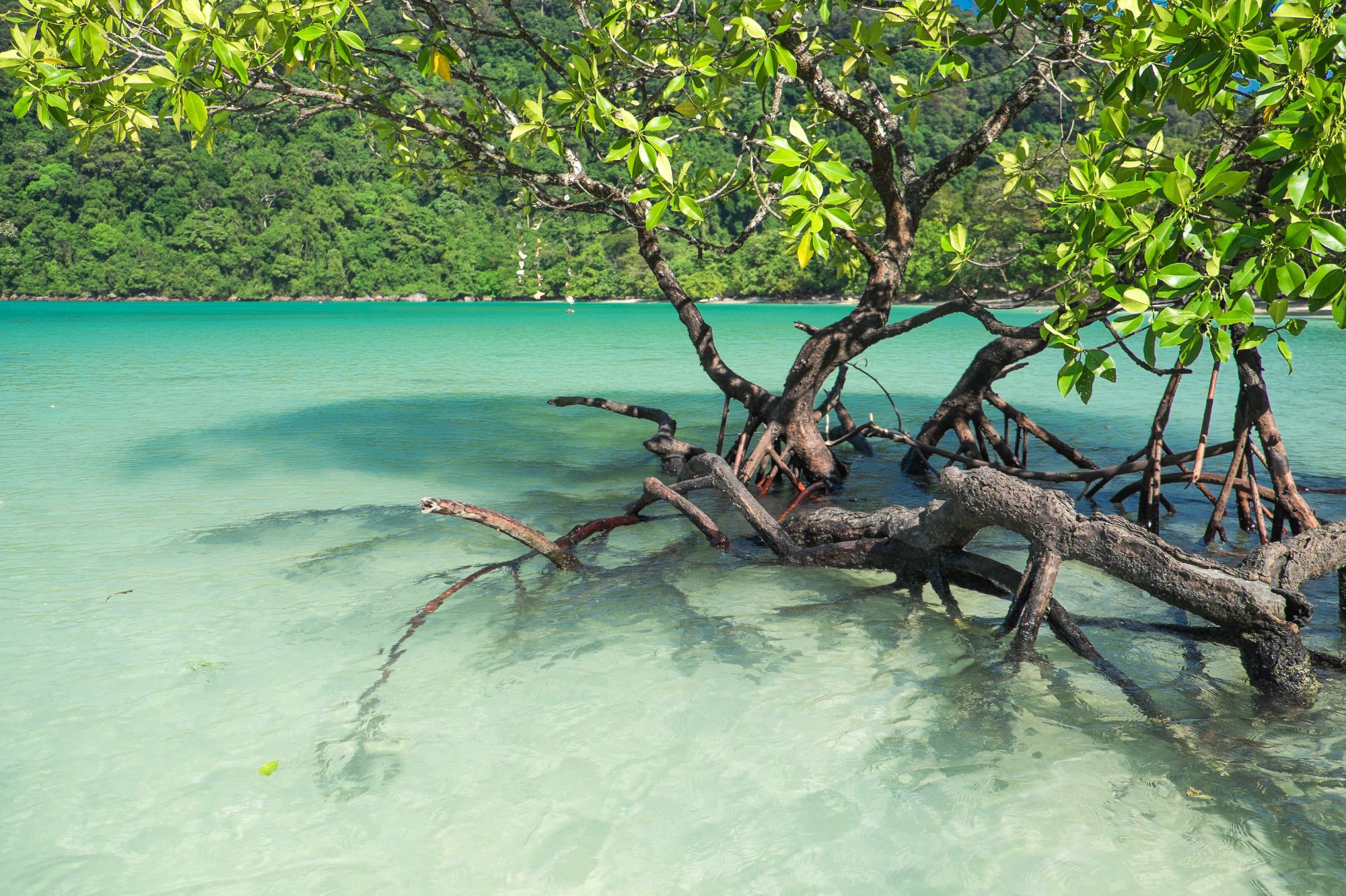Story
Celebrating International Day for the Conservation of Mangroves
26 July 2023

The International Day for the Conservation of the Mangrove Ecosystem was adopted by the General Conference of UNESCO back in 2015, and has been celebrated each year since, every 26th July.
The day aims to raise awareness of the importance of mangrove ecosystems as "a unique, special and vulnerable ecosystem" and to promote solutions for their sustainable management, conservation and use.
Today, we’re sharing five remarkable things to celebrate and raise awareness of invaluable mangrove habitats.
.jpg)
1. Biodiversity Hotspots
Mangroves act as thriving hubs of biodiversity. These complex ecosystems provide safe havens for a diverse array of plant and animal species. They serve as nursery grounds for numerous marine organisms, such as fish and crustaceans, which find shelter in the labyrinth of mangrove root systems. The intertwining roots create a rich food source too, for various bird species, as well as monkeys, deer, and even kangaroos. Plus, a source of nectar for honeybees. Protecting mangroves means safeguarding countless forms of life that are integral to the ecological balance of coastal regions.
.jpg)
2. Coastal Protection
Mangroves play a crucial role in shielding coastlines. Their dense root systems act as a natural barrier against storm surges, tsunamis, and erosion.
“A 500-meter mangrove strip reduces wave height by 50-99%”
With climate change and the intensifying frequency of extreme weather events, the conservation of mangrove ecosystems has taken on heightened significance. Coastal communities, particularly in vulnerable regions, depend on the protective shields provided by mangroves to mitigate the devastating impact of storms and rising sea levels.
.jpg)
3. Storing and trapping carbon
Mangroves possess a remarkable capacity to trap and store carbon dioxide from the atmosphere, also known as ‘carbon sequestration’.
“One hectare of mangrove can store 3,754 tons of carbon, the equivalent of taking 2,650+ cars off the road for one year.”
Our Director of Science Professor Steve Widdicombe said: “There are natural processes in habitats like mangroves, we call ‘Blue Carbon’ habitats. Mangroves, along with other habitats like seagrasses, saltmarshes, trap carbon dioxide from the atmosphere and lock them away into the sediment. So, they sequester that carbon for us. So, it’s important that we protect and restore those habitats and allow them to do those natural processes.”
By preserving mangroves habitats, we can support efforts to mitigate climate change and alleviate its consequences on a global scale. But what happens if we don’t preserve these ecosystems?
“If destroyed, degraded or lost, mangroves become sources of carbon dioxide. Experts estimate that carbon emissions from mangrove deforestation account for up to 10% of emissions globally, despite just covering 0.7% of land coverage.”
.jpg)
4. Sustainable Livelihoods
Mangroves contribute to the wellbeing, food security, and protection of coastal communities worldwide – they offer a considerable array of ecosystem goods and services.
The degradation of mangroves directly impacts the socio-economic wellbeing of these communities, leading to loss of income and food insecurity. Conserving mangroves not only protects biodiversity but also safeguards the livelihoods of those who depend on these ecosystems for survival.
.jpg)
5. Natural filters
Mangroves exist on the boundary between land and sea, and mangrove forests are skilled at filtering pollutants from river water, even trapping excess sediment before it reaches the ocean.
.jpg)
But, mangroves are in danger...
‘Mangroves are disappearing three to five times faster than overall global forest losses, with serious ecological and socio-economic impacts. Current estimates indicate that mangrove coverage has been divided by two in the past 40 years.
It has been estimated that more than three quarters of mangroves in the world are now threatened and with them all the aquatic and terrestrial organisms that depend on them.’
Stay tuned for more tomorrow, to find out more about our research here at Plymouth Marine Laboratory to protect these spectactular ecosystems.